Should Your Small Business Use LinkedIn to Acquire New Clients?
Adding this social platform to your marketing strategy can help your company grow!
LinkedIn has emerged as more than just a job search portal—it’s a powerful tool for small businesses aiming to expand their reach, build meaningful connections, and enhance their brand visibility. With over 700 million professionals from various industries worldwide, the potential to grow your small business on this platform is immense.
According to Sprout Social, businesses marketing on LinkedIn generate 277% more leads on average than those engaged in Facebook marketing alone. So whether you’re looking to share great content for your brand, find new employees, or reach a new audience, adding LinkedIn to your marketing strategy is a smart idea.
But how exactly can you leverage LinkedIn to achieve your business objectives? This guide will walk you through practical strategies and tips to unlock the full potential of LinkedIn for your small business.
First You Need To Optimize Your LinkedIn Page
Before you can start making connections and posting articles relevant to your industry or target audience, make sure you create an appealing LinkedIn company page. Start with a high-quality profile picture that’s relevant to your brand. Not having a photo is an often overlooked mistake. Company pages can use the brand logo as a profile picture while high-resolution professional headshots are ideal for personal profiles.
Next, you need to get all your employees on board. Have your employees add your company to their personal profiles. This automatically turns them into followers and helps your company get noticed on the platform. Encourage them to like your company posts and also share your page and posts to their own personal network to generate new followers. Employees can play a critical role in broadening your reach and strengthening your network on the platform. Connections mean everything on LinkedIn.
How To Make Relevant Connections on LinkedIn
The basis of LinkedIn is the ability to make meaningful connections with other professionals. It’s important to focus on the quality of those connections. Targeting the right groups is key to your strategy and can strengthen your client base. Who should you connect with? Begin by identifying and following other companies in your same industry.
For example, a good way to connect with Healthcare practitioners, providers, patients and policymakers is to know exactly what the hot trends are right now. One of the fastest-growing topics of conversation in the industry today is telemedicine. Timely content creation like this on LinkedIn can help you connect with an active, engaged audience.
You can then use these connections to gain a sense of professionals in fields or occupations that could become great referral sources for you.
6 Tips for LinkedIn Messaging
Effective messaging on LinkedIn can significantly amplify your networking efforts and foster stronger professional relationships. It’s not just about reaching out but connecting in a way that’s both personal and professional. Here are some strategic tips to enhance your messaging on LinkedIn:
1. Personalize Your Messages
Always take a moment to personalize your messages. Whether you’re reaching out to a new connection or following up with an existing one, include specific details that show you’ve done your homework. Mentioning a recent post of theirs you found insightful, or congratulating them on a professional achievement, can make your message stand out.
2. Keep It Professional, Yet Approachable
LinkedIn is a professional platform, but that doesn’t mean your messages have to be stiff or overly formal. Aim for a tone that’s professional yet friendly. Starting with a simple “Hi [Name],” can set a positive tone for the conversation. Ensure your message is clear, concise, and free from jargon that might not be familiar to everyone.
3. Offer Value in Your Interaction
Whenever you reach out, make sure there’s a value proposition for the recipient. Whether it’s sharing an article relevant to their interests, offering help, or introducing them to someone in your network, the key is to make the interaction mutually beneficial. People are more likely to respond positively when they see a clear benefit.
4. Timing Matters
The timing of your message can significantly impact its reception. Aim to send messages during business hours on weekdays to increase the likelihood they’ll be seen and responded to promptly. Avoid messaging during weekends or holidays when people are less likely to check their LinkedIn.
5. Follow Up, But Don’t Spam
If you haven’t received a response to your message, it’s okay to send a follow-up message after a week or two. However, always be respectful of the other person’s time and attention. If they don’t respond after a couple of attempts, it’s best to take it as a sign they’re not interested or available at the moment and move on gracefully.
6. Utilize LinkedIn’s Messaging Features
LinkedIn offers several features that can enhance your messaging strategy. For example, you can send voice messages or video messages to add a personal touch to your communication. Additionally, using InMail (available with LinkedIn Premium) allows you to reach out to people you’re not directly connected with, expanding your networking opportunities.
Incorporating Messaging into Your LinkedIn Strategy
Effective messaging is a cornerstone of successful networking on LinkedIn. By personalizing your approach, providing value, and utilizing LinkedIn’s messaging features wisely, you can build meaningful professional relationships that contribute to your small business growth. Remember, the goal of messaging on LinkedIn is to move beyond mere connections to cultivate relationships that are beneficial and lasting.
LinkedIn Marketing Strategy
The Power of Networking
LinkedIn’s bread and butter is networking, but it’s not just about adding contacts; it’s about building relationships. Start by connecting with industry peers, potential clients, and thought leaders. Engage with their content, and don’t shy away from starting conversations. Remember, the goal is to foster genuine relationships that can lead to opportunities, not just to increase your connections count.
Enhancing Your Brand Presence
Your LinkedIn company page is your business’s digital storefront. Make it count! Ensure your page is complete with a compelling summary, high-quality logo, and cover image that reflects your brand identity. Regularly post valuable content that resonates with your audience, whether it’s industry insights, company updates, or thought leadership articles. This not only positions your brand as an authority but also keeps your audience engaged and informed.
Content is King
Creating and sharing quality content is key to engaging your LinkedIn audience. Use a mix of articles, infographics, videos, and posts to share your business story, showcase your expertise, and provide value to your followers. Tailoring your content to address your audience’s challenges and needs can establish your brand as a go-to resource in your industry.
Leveraging LinkedIn Groups
Participating in LinkedIn Groups can be a goldmine for small businesses. Find groups relevant to your industry and actively contribute to discussions. It’s a great way to showcase your expertise, gain insights, and connect with potential clients or partners. Just remember, contribution over promotion is the mantra here.
LinkedIn Advertising
While organic growth is crucial, LinkedIn’s advertising platform offers targeted solutions to reach potential customers directly. From Sponsored Content to InMail campaigns, LinkedIn ads can help you achieve various goals, such as driving website traffic, generating leads, or increasing brand awareness. The key is to start small, test different ad formats, and iterate based on performance data.
Analytics and Insights
Don’t fly blind—use LinkedIn’s analytics tools to track the performance of your content and company page. Insights on engagement, follower demographics, and content reach can help you refine your strategy and better understand your audience. This data-driven approach ensures you’re investing your efforts in tactics that work.
Leveraging LinkedIn for your small business requires a blend of strategic networking, brand building, and content marketing. Remember, consistency and engagement are key. With patience and persistence, you’ll see your LinkedIn efforts pay off in building a stronger brand and a more robust business network. If you have questions or would like more information on how to make LinkedIn work for your business, contact us. We’re ready to help serve as your marketing partner.


